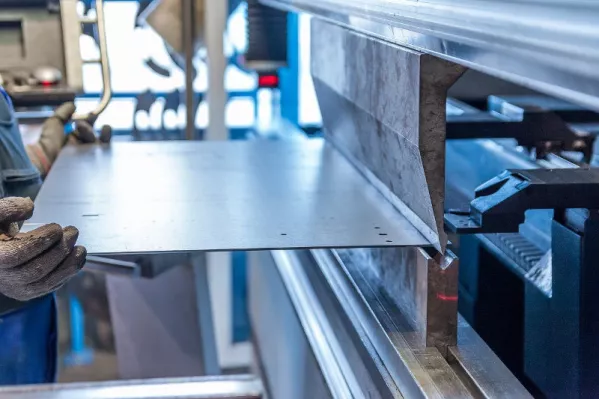+48 95 762 08 61
Modern technologies of metal working
Laser beam cutting
Laser cutting of tubes and sections
Robotic welding
Sheet metal bending
Laser beam cutting
Laser cutting of tubes and sections
Robotic welding
Sheet metal bending

The process of bending sheet metal is an integral part of the metal industry, allowing for the transformation of the shape of a metal sheet without altering its physical properties. Nowadays, the press brake is one of the primary tools used for this purpose. Let s take a closer look at how these machines have evolved and what innovations are shaping the future of this process.
The fundamental principle of bending sheet metal using a press brake involves applying the appropriate force, known as the bending moment, to the metal sheet. This process relies on the vertical movement of the upper beam, called the ram, which encounters the sheet metal affixed to the lower, stationary part of the press, known as the die. Bending typically requires several strokes of the ram on the metal until the desired shape is achieved.
Press brakes have come a long way in their evolution from their initial versions. Modern machines offer advanced solutions that are significantly more precise and efficient. Faustyn Hamerlak, a sales engineer at TFM, notes that choosing the right press brake model can be a challenging task for customers. They must consider various factors such as equipment, performance, and maintenance costs.
Manufacturers of press brakes compete with each other in offering increasingly newer and more advanced solutions. Innovations encompass both machine technology and design. One of the key directions of development is the automation of the sheet metal bending process.
Automation has become an integral part of the metal industry, not limited to the bending process alone but also extending to the preparation of the material, namely, the sheet metal. Automated cutting, stacking, and transferring systems greatly enhance production efficiency, reducing the time required to prepare the material for bending.
Automation also allows for higher precision and repeatability in the bending process. Machines equipped with advanced numerical control systems enable the programming of various bending shapes, increasing production flexibility and catering to diverse customer needs.
Automation is also a means to minimize the risk of human errors and reduce labor costs. Automatic press brakes monitor and control the bending process, resulting in improved product efficiency and quality.
It's worth noting that the growing importance of automation in the sheet metal bending process doesn't entail the elimination of the human factor. Machine operators remain essential team members responsible for overseeing the process and maintaining the machines in good condition.
The process of bending sheet metal using a press brake has become significantly more advanced and efficient through the introduction of new technologies and automation. Customers now have a wide range of machine models to choose from, and manufacturers offer increasingly innovative solutions. Automation is a key element of the future of the metal industry, allowing for greater precision, efficiency, and cost reduction in production. Staying up to date with developments in this field is important to harness the potential of modern press brakes and meet market demands.